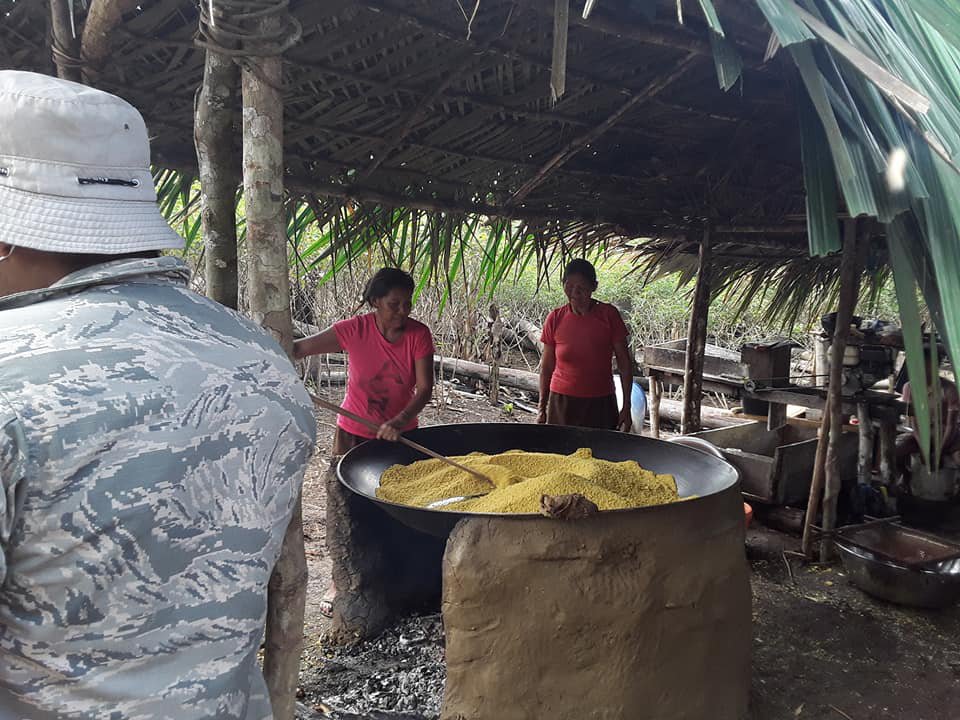From Vishani Ragobeer
Cassava, a staple food for many indigenous people across Guyana, is a harvest that grows underground. It is used to make farine and cassava bread, which are staples along with piwari, a slightly alcoholic drink, and cassareep, which is the base for sauces.
In the Aishalton parish in the Deep South Rupununi area of the Nine Region (Upper Takutu-Upper Essequibo), Toshao Michael Thomas emphasized that many of the farmers have small farms that are only about an acre or two in size.
On these farms, he explained, some farmers practice subsistence farming while others market their cassava products on a small scale. During an interview with the News Room, Thomas said that a typical farm would be able to produce enough cassava to make about 20 sacks of farine. When it is sold, each bag costs about $ 15,000. A total of 20 bags of Farine cost $ 300,000.
But now that the region – like most other local regions – is struggling with a worse than normal rainy and rainy season, these farmers are particularly affected.
“We have over 60 farms that have been damaged by the heavy rains,” complained Toshao Thomas on Friday.
 Farmers in Masakenari process cassava into farine to prevent spoilage during the flood season (Photo: Stabroek News / May 25, 2021)
Farmers in Masakenari process cassava into farine to prevent spoilage during the flood season (Photo: Stabroek News / May 25, 2021)
While Toshao provided an update on the situation in his Aishalton community, he said that the water that had accumulated, although there had been no rainfall in the past two days, had resulted in farms being filled with water. And since cassava cultures grow underground, this situation has been particularly detrimental to the crops.
In an attempt to save at least part of the cassava cultures, the Toshao said the village council had asked the regional authorities and the Civil Protection Commission (CDC) for barrels or other containers to help store the excavated cassava.
The problems of the cassava farmers are not limited to those in Aishalton.
In the village of Karaudarnau in the deep south, manioc farmer Peter Isaacs complained: “All the manioc under water and the harvest can die as long as the weather stays that way…. The majority of farmers are in the same situation. “
The farmer also said that containers would enable farmers in his village to save at least part of their crops.
On Friday, Toshao von Karaudarnau, Apollas Isaacs informed the news room that there are more than 700 people living in this village. Here farmers practice subsistence farming as well as an important economic activity.
“The farmers are affected by the floods and the animals are dying (on) the ranches,” complained Toshao Isaacs.
However, his village has received some relief from the CDC and regional authorities. According to him, 25 bags of food were provided. Although this is not enough for the more than 120 farmers in the community, he explained that the food was shared equally.
During a recent visit to the area, Prime Minister Brigadier (Ret’d) Mark Phillips informed the regional authorities and some affected residents that the situation is being continuously monitored and assistance is being provided to mitigate the effects of the flooding.

